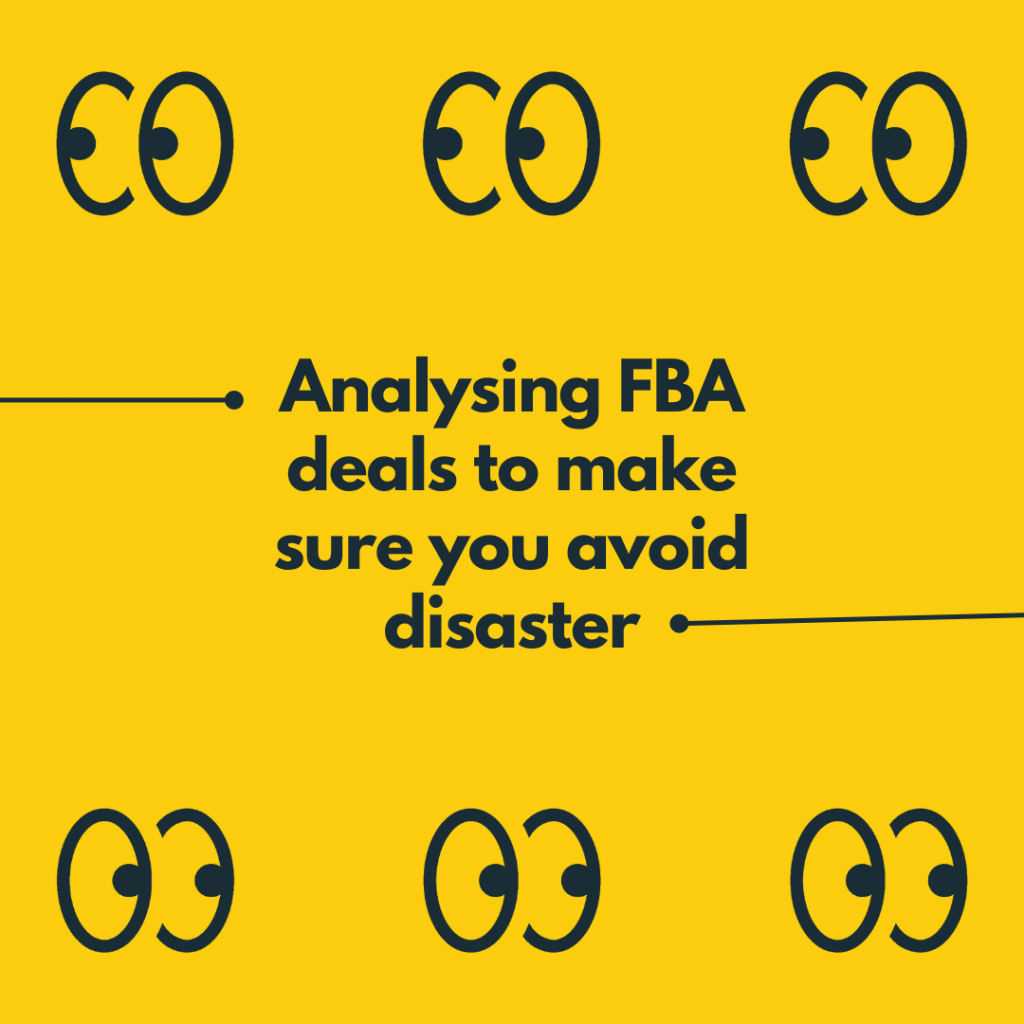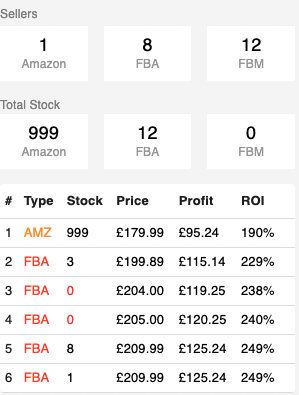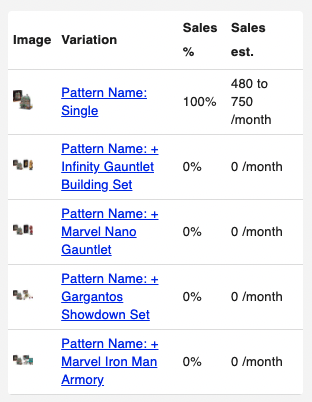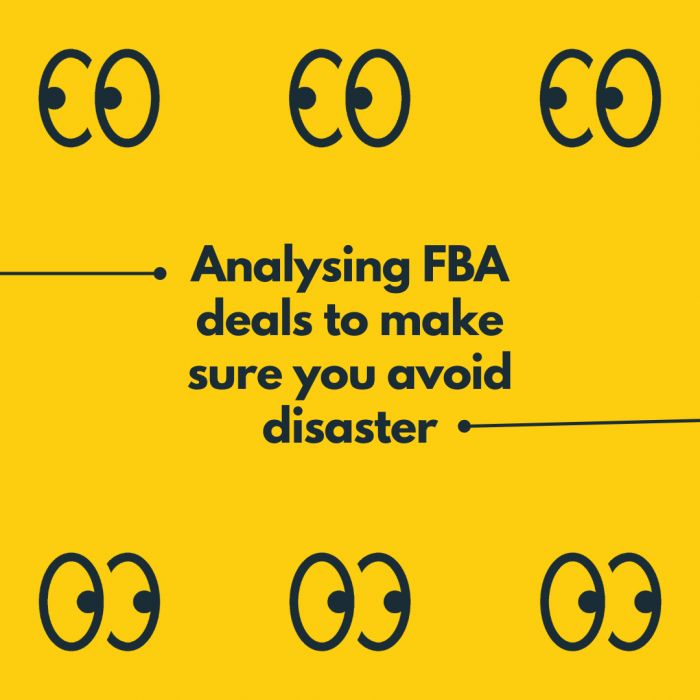Amazon FBA is a form of arbitrage. But what is arbitrage? Arbitrage is when you find an item selling for a cheaper price in one place, and sell it for a higher price elsewhere. But completing product research is not this simple. In this week’s blog we take you through the steps we use when analysing products to avoid disaster and find profitable deals.
It is is important to spend the time analysing deals to ensure that they are profitable and that you can sell them. So, let’s dive in and explain the process so you can find your next profitable deal.

Pricing
You will want the item on Amazon to be selling for twice the price you can purchase it for. This will mean that you generate a decent ROI (Return on Investment) after Amazon fees.
Are you gated?
Don’t panic! We have explained how you can get ungated in our previous blog here.
If you are gated it means you are not currently able to sell an item. This is due to the items category or brand. Some categories or brands restrict who can sell their products. You can check to see if you are gated by searching for it in your Amazon seller account inventory. There are some items where you can auto-ungate and become automatically ungated, so it is worth checking products.
What options do you have if you are gated? You can look at a different product. Or you can apply to get ungated.
Click below to learn more about getting ungated.
Return on Investment
ROI stands for Return on Investment. We would suggest an item is good if it has an ROI of 30% or more. Having an ROI of 30% or more gives you a safety net if the price of an item drops.
Profit Per Unit
This one is pretty self-explanatory; it is the amount of profit you could generate per unit after fees. The amount of profit you are looking to make per unit can depend on your personal business strategy and goals.
Monthly sales
How much does the item sell per month? Don’t forget to cross reference the items sales with the number of other sellers on the listing. For example, think of an item which makes 15 – 29 sales per month and there is only one other seller. You could share the Buybox. This way you both generate sales.
However, if the same item had 25 other sellers the likelihood of you winning the Buybox is much lower. This could also mean that your items take longer to sell, trapping your money within the listing. This can affect your growth and cashflow if items are in Amazon’s warehouse because they have not sold.
How many other sellers are there?
As a rule of thumb if an item has less than 5 other FBA sellers this is a good sign. However, you can still generate sales selling an item which has more competition if other sellers have a small amount of stock. As it means you are more likely to win the Buybox (we explain this below).
When analysing deals FBM (fulfilled by Merchant) sellers are not something you need to worry about. Why? Because Amazon favour FBA sellers when giving the BuyBox to a seller.
Don’t forget to check if Amazon are selling on the listing or have sold on it in the past. If Amazon are selling on the listing, they will be the dominant seller. Controlling the Buybox and limiting the number of sales you can generate. But they may allow sellers to share the Buybox with them and consequently share the sales too.
You can check to see if Amazon have sold this item before by looking at the historical data graph. You can also check the advance historical data included in the Profitl extension.

How much stock do other sellers have?
Looking at an item’s stock data you can check to see how much other sellers have in stock. This can help you to better understand if you could win the Buybox and sell the item. Obviously, it is important to keep in mind that sellers could restock. However when analysing it is useful to better understand the competition.
If you are looking at a product and see that a competitor has 700, 800, 900 units of stock it is likely they are a wholesaler who is able to buy units cheaper and sell them at a slightly cheaper price. We would therefore suggest that in examples like this it will be much more difficult to win the Buybox. So it may be a better idea to focus on another product.
Price Graphs
Price graphs are incredibly important when it comes to analysing any potential FBA deal. Using the price graphs, you can look at the historical sales an item has had as well as if Amazon have sold the item.

Sales Rank Line (the green line in our example)
It isn’t an exact science, but the sales line can be used to check that an item is selling. Sellers can tell this based on the shape of the sales line. If the sales rank line is going up and down a lot this indicates sales. As the line drops when a sale is made. Lots of movement therefore suggests lots of sales. This isn’t an exact measurement. But sellers use it as a handy way of checking an item is selling.
Buy Box Line (the pink line in our example)
This is the line on the graph which shows you the pricing of an item. If you remember one detail about analysing products from this post, remember this. Before you invest in a deal you need to look at the price graph. This is so you can understand if the item’s price is consistent or not.
If an item is currently selling for the highest price it has been in a year it is likely that the price will drop back down at some point. But if it is selling at its lowest price in a year, it could potentially rise. Meaning you generate more profit and a larger ROI. Looking at the price graph you can better understand an item’s potential and if it will be profitable.
Item Warnings
To help users avoid potential risks the Profitl scanner has an item warnings section to give you a heads up. Depending on the risk you may decide not to send in a product or will need to package it differently and follow specific guidelines.

IP Risk
IP risk stands for intellectual property risk. You can receive an IP complaint on your Amazon account by selling an item you do not have permission to sell. IP violations can come from brands or the maker of a listing on Amazon. In a previous blog we explain how you can ironclad your account against IP complaints.
An IP violation should be taken seriously as they can seriously damage your Amazon account. It is therefore important to analyse potential products. If an item has only one seller or the creator of the listing has the same name as the brand, we would suggest avoiding these listings.
Hazmat
Hazmat items are items including substances or materials that may pose a risk during storing, handling or transporting items. You can sell hazmat items however it is necessary for sellers to apply to Amazon’s Dangerous Goods Programme to sell hazmat items. We explain this in our previous blog here.
It is important to remember that Amazon will not allow you to use their partnered shipping to send in hazmat items. So you’ll need to organise your own shipping to send in items which are classed as hazmat.
Oversized
This simply means that the item is larger and therefore will cost you more in fees. Like hazmat items this is important to take into consideration as it can lead to you paying more in fees compared to smaller items.
Variations
An item’s sales rank and reviews are shared between different variations for a product. It is useful therefore to check to ensure that the variation you have found is selling well and has positive reviews. See the variation feature in action here.

Concluding thoughts
It is useful to view these different aspects as a form of sign-posting you, pointing you in the right direction when analysing potential deals. By analysing Amazon FBA deals using these different sign posts you can avoid potential disaster and better understand the product you are investing in.
If you would like to learn more Profitl you can here. We also have a Youtube channel and you can find other blog posts here.
